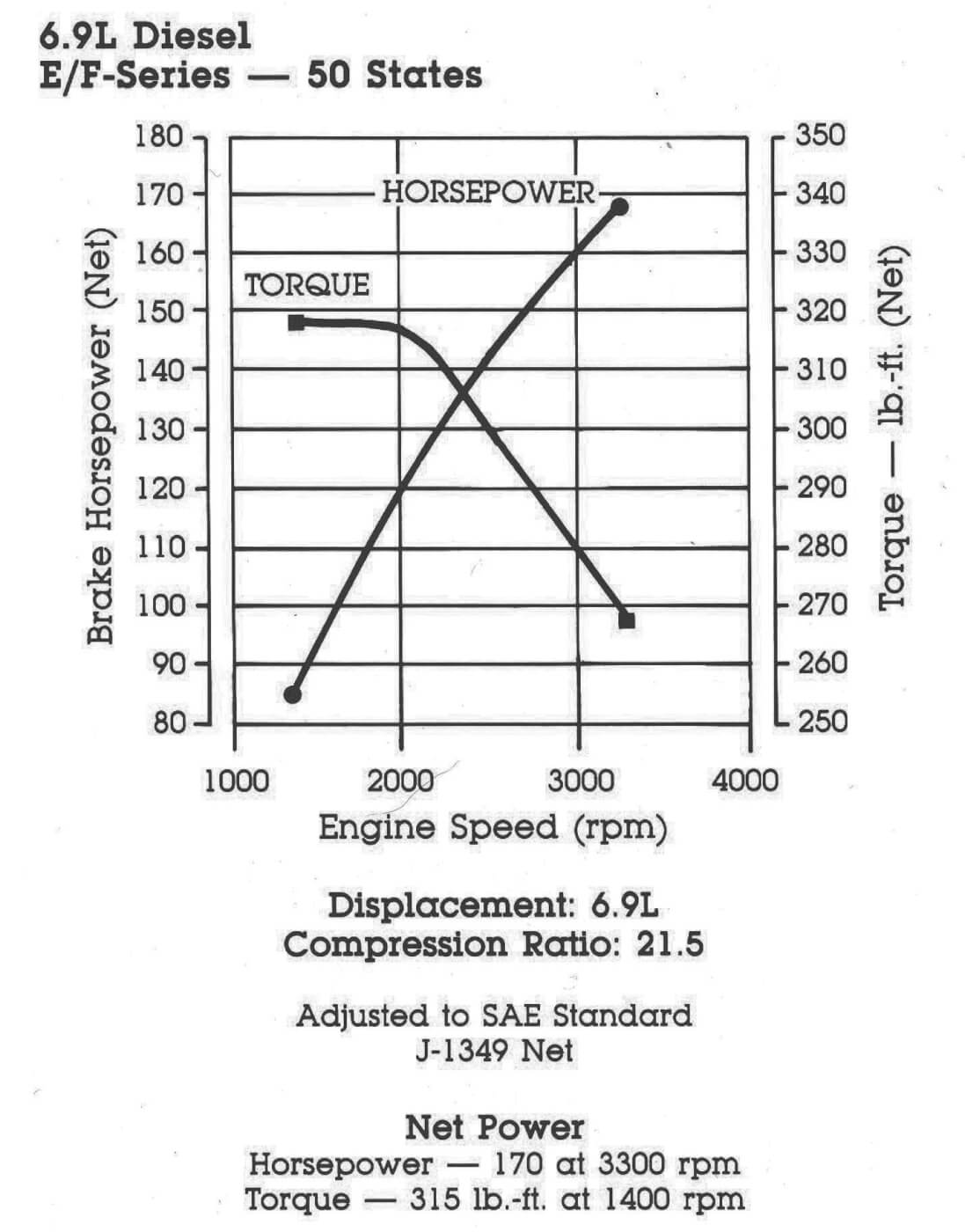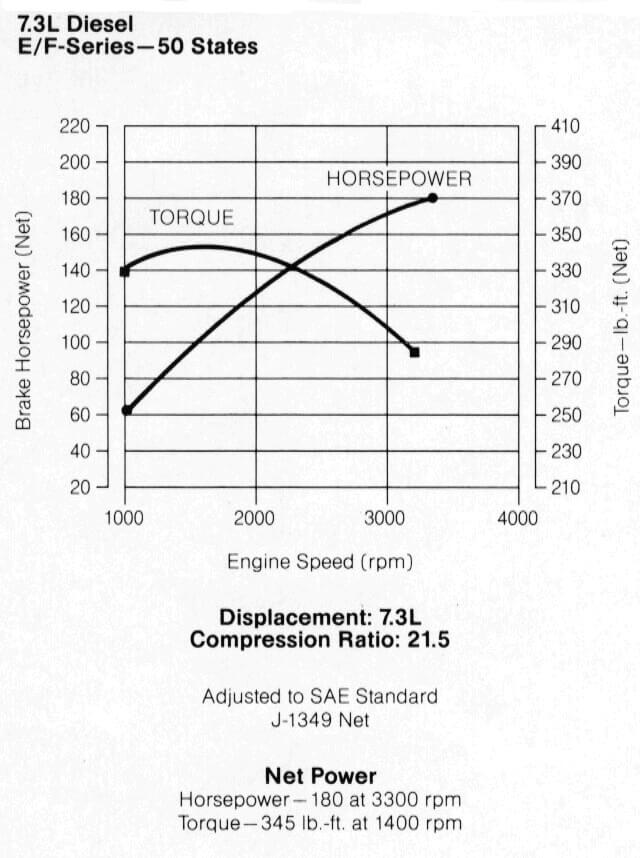Ford’s First Diesel Pickup Engine
It was the 1970s and people were reeling from the shock of gas prices that had tripled in just a few short years. The effect was profound: a national 55 mph speed limit, government-mandated fuel economy standards, and consumers scrambling for vehicles with better fuel economy. Diesel pickup engines, at the time not much of a presence in the American car and light truck market, were immediately eyed as a fuel economy answer. The collective American eyebrow raised at the idea of noisy, smelly, smoky diesels, not to mention the notable scarcity of diesel fuel stations at the time, but the diesel’s high fuel economy and low-cost fuel were attractive, especially in the truck world where a torquey gasser meant sub-10-mpg fuel economy.
In 1978, GM and Dodge tied for being the first to offer a diesel pickup engine. The Chevrolet entry was a C10 with the notorious Olds 5.7L V-8 making 120 naturally aspirated horsepower. Dodge fielded a 4.0L (243ci) Mitsubishi NA diesel inline-six with 100 rip-snorting horsepower in half and 3/4-ton 4×2 and 4x4s. Dodge dropped the Mitsu after 1979 and remained diesel-less until 1989, but Chevrolet continued to offer the 5.7 in C10s through 1981, and then replaced it with the vastly better 6.2L in 1982. The stage was now set for a grand entrance by Ford.
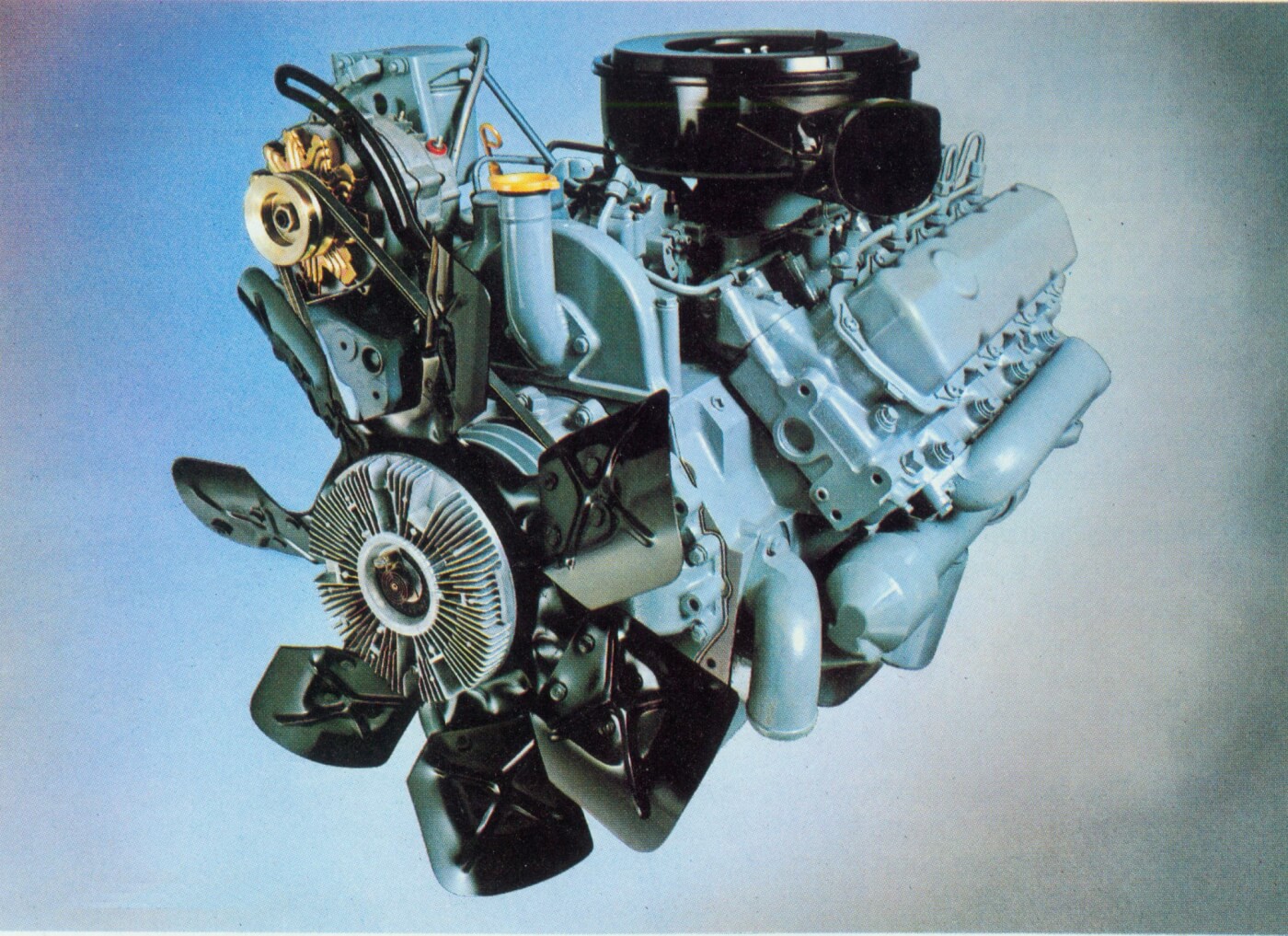
FORD AND INTERNATIONAL HARVESTER TEAM UP
International Harvester started development work on a V-8 diesel for medium-duty trucks in 1978, with architecture based on IH’s 446-cid industrial gas V-8. “Aaakkk,” you say, “a conversion!” Not really—the diesel merely adopted similar block dimensions that made tooling-up easier.
It isn’t exactly clear when Ford Motor Company’s interest was piqued by the IH diesel, but in 1981 a $500-million agreement was signed for IH to develop the engine for Ford light and medium duty trucks and supply engines for five years. Because it was a hefty engine, weighing in at more than 900 lbs., it was soon clear this was going to be a ¾-ton-and-up powerplant.
The Ford diesel light trucks debuted in late 1982 as 1983 models, with the new diesel pickup engine offered as a $2,225 option. The lightest-duty truck in which the new 6.9L (420-cid) diesel was available was the F-250HD (8,600 lbs. GVW). Availability went all the way up the light truck line including the E-Series vans and up to the medium-duty trucks. The first advertised rating was just 161 hp and 307 lb-ft, with a 19.7:1 compression ratio. These were likely preliminary specs because 170 hp and a 20.7:1 compression ratio soon became the advertised norm.

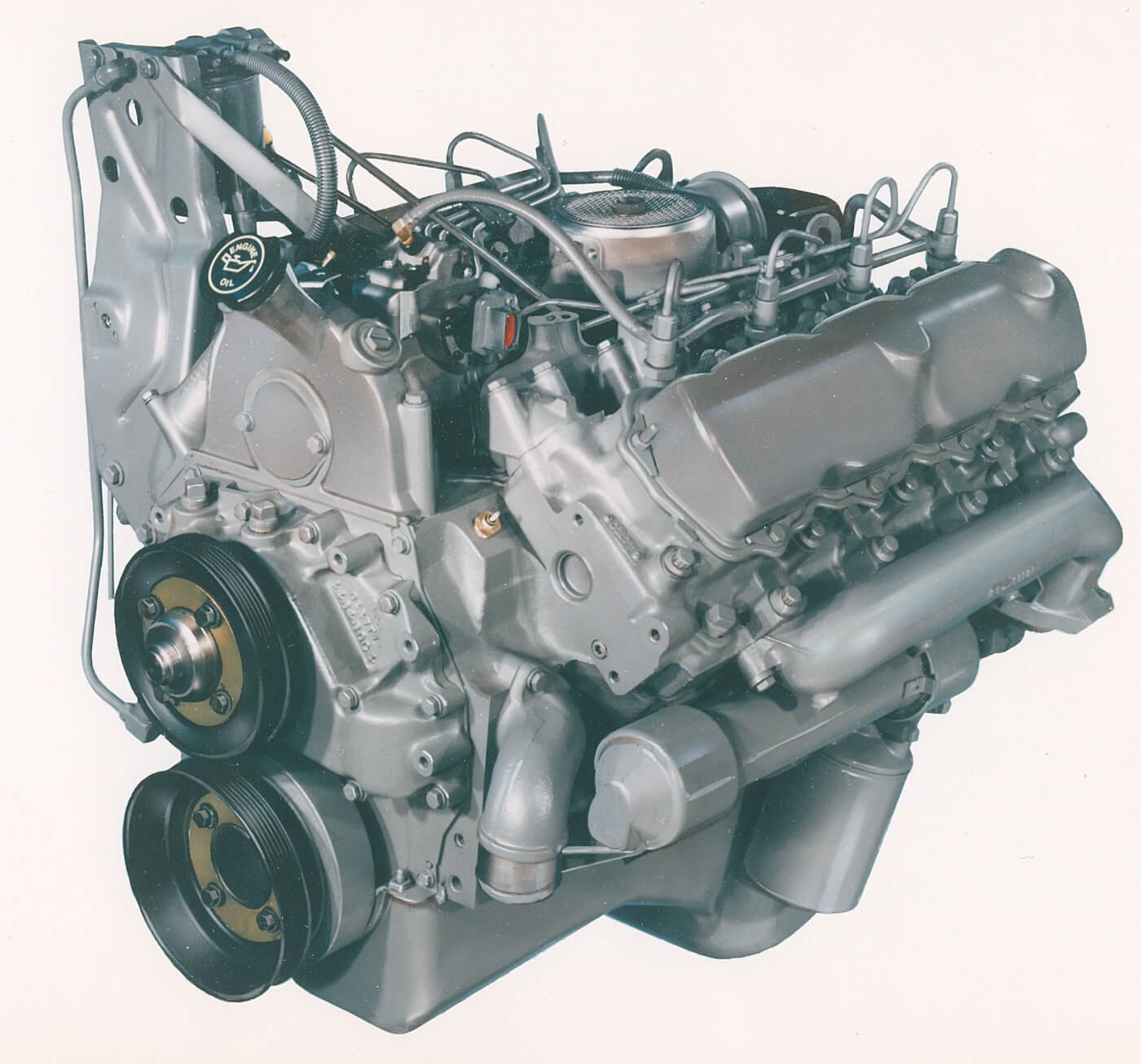
The 6.9 featured oil-cooled pistons, four bolt mains, a massive forged crank with 2.2-inch rod and 3.1-inch main journals, valve rotators, roller tappets, and a gear-driven cam and injection pump. It was naturally aspirated used the Ricardo V combustion chamber. Indirect injection came from a Stanadyne (Roosa-Master) DB2 rotary pump and pintle-type injectors that popped at 2,100 psi. Issues with cold starting appeared right away, so for the 1984 model year the compression ratio was increased to 21.5:1. Torque rose to 315 lb-ft as a result, and that’s where output would stay for the remainder of the engine’s run.
For 1988, the pickup engine got a makeover. The bore was increased by 0.18-inch, bumping up displacement to 7.3L (444 cid). The heads, head bolts, head gaskets, rocker gear and combustion chambers got a work over and the glow-plug system was completely revised. The injection system also got some tuning alterations. As a result, output was boosted to 180 hp at 3,300 rpm and torque to 338 lb-ft (though some spec sheets show 345 lb-ft). In mid-1992, power output was increased to 185 and torque went up to 360. The 1992 model year also brought a serpentine belt system.
The revisions to the 7.3 were largely successful but there were stumbles. The overbore and cooling system changes resulted in an increased tendency towards cavitation damage on the cylinder walls in the water jacket. This was manageable using the right anti-corrosive coolant additives (called SCAs, supplemental coolant additives) but it became a well-known problem.
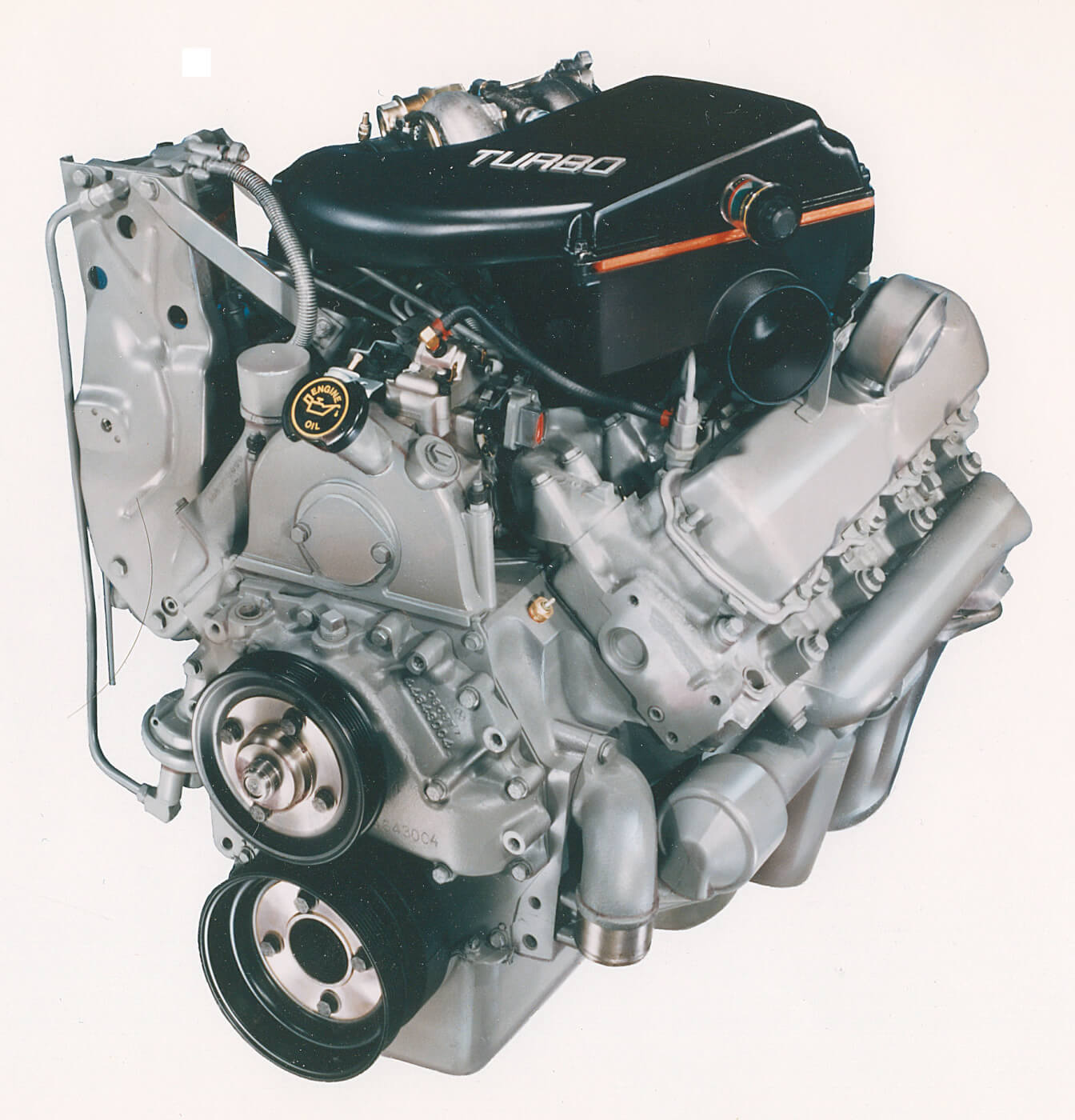
The IDI reached its zenith in late in 1993, when the first turbocharged 7.3 was introduced. It mounted a Garrett wastegated turbo with an A/R of 0.82. Advertised power and torque were 190 hp and 385 lb-ft, but this engine was somewhat underrated. If you look at the nearby power chart, you will see it’s mysteriously cut off at 3,000 rpm vs. the NA engine going to 3,300. The power line looks to still be climbing at 3,000 and extrapolations show the turbo engine would have developed more than 200 hp at 3,300 rpm. Speculation within the IDI enthusiast community is that with the new 210-hp Power Stroke engine on the horizon, Ford marketing wanted to make sure the new engine would be more appealing than the old one. The IDI turbo engine was hyped more for its high-altitude performance than its raw power, but tweaking in the intervening years have shown the IDI turbo is fully capable of 250 hp with only minor tuning.
Internally, the IDI turbo received improved head gaskets with a heavier fire ring. The pistons were given keystone rings and anodized crowns. The wrist pin diameter was increased from 1.110- to 1.308-inch, Inconel exhaust valves were added, and the oil cooler bundle was increased from 24FPI (fins per inch) to 30. The injection pump calibration was altered and new injectors were fitted. Minimum boost was 5 psi but most developed 8-10 psi in service.
The Turbo IDI and the Power Stroke shared the stage in 1994 and sales overlapped a little after the Power Stroke’s mid-year intro. In reality, the Power Stroke is very much the IDI engine’s progeny. The IDI’s heritage is clear, especially in the first-generation Power Strokes, and there are even a few interchangeable parts.
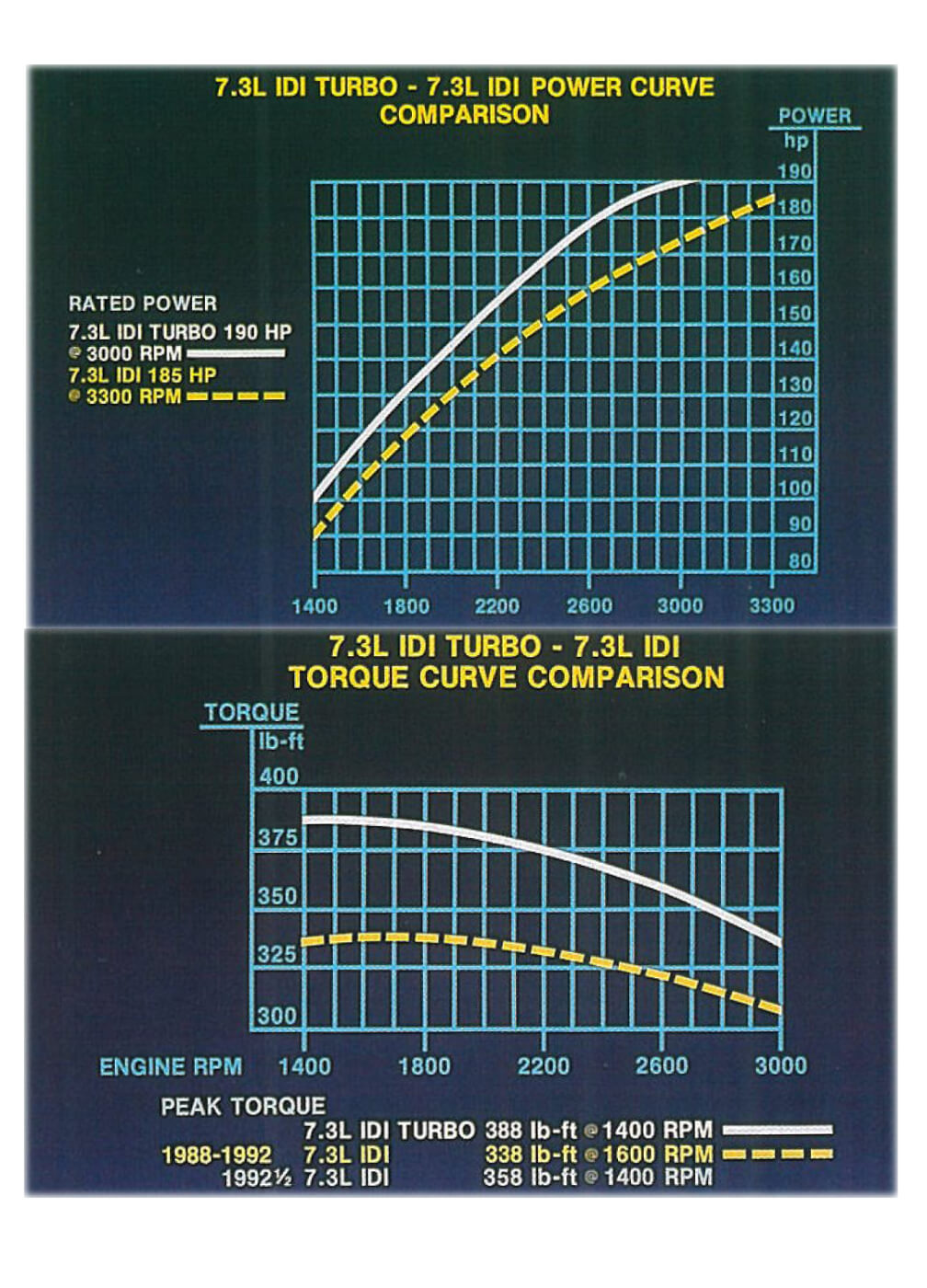 THE IDI TODAY
THE IDI TODAY
Nearly 1.5 million 6.9L and 7.3L IDI engines were produced by International Harvester (now known as Navistar International). They are truly one of the cornerstones of the growth of diesel power for pickup engines. The IDI is an old-school engine and can’t hold a candle to the modern electronic engines in the power department, and yet it has a large and loyal following. There are countless IDIs still on the road, some still working in commercial livery, and they seem to just go on and on. No question, the Ford IDI engine is nowhere near the end of the road.
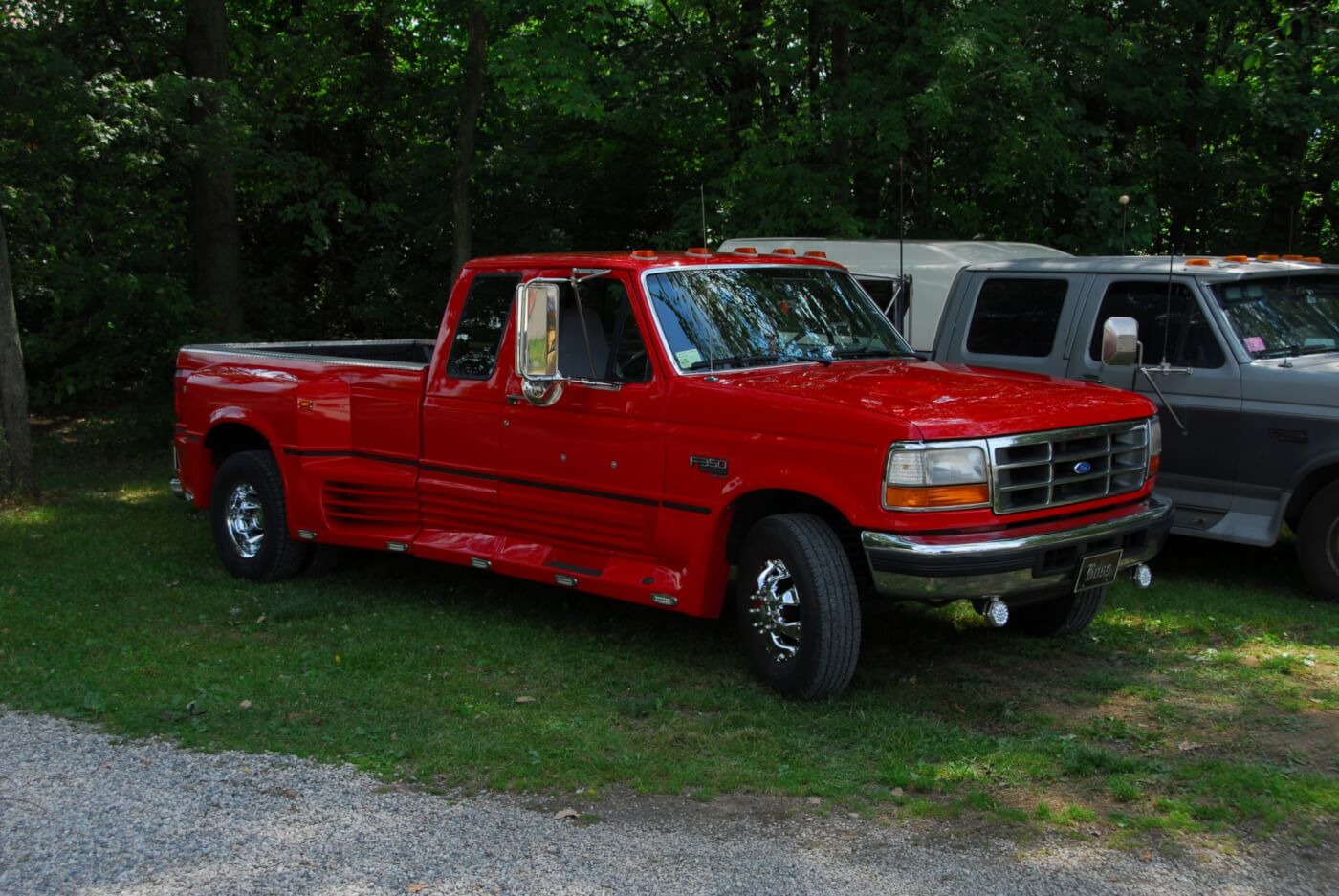
The Ford Package
1983-1986 – The Bullnose Era
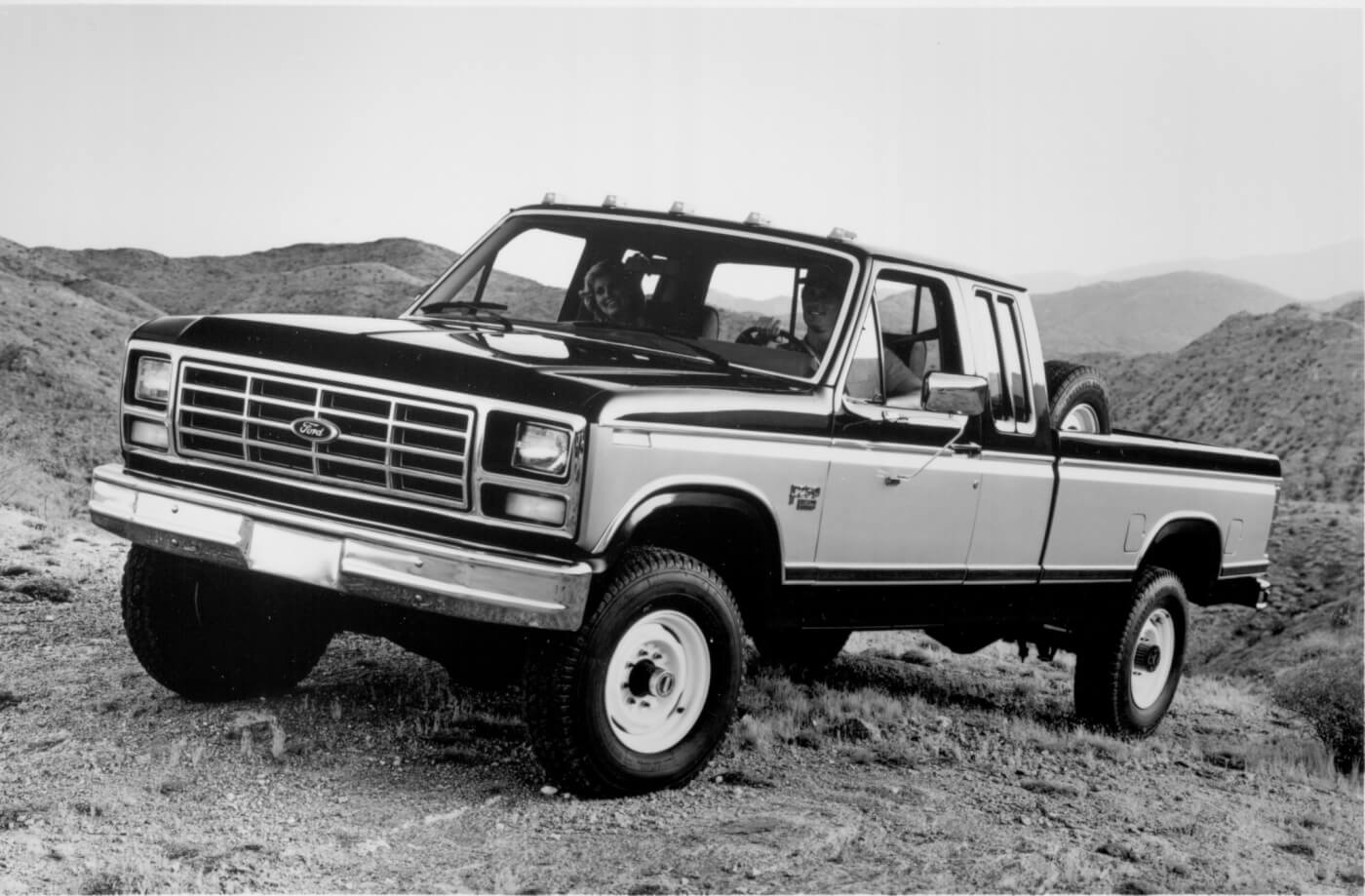
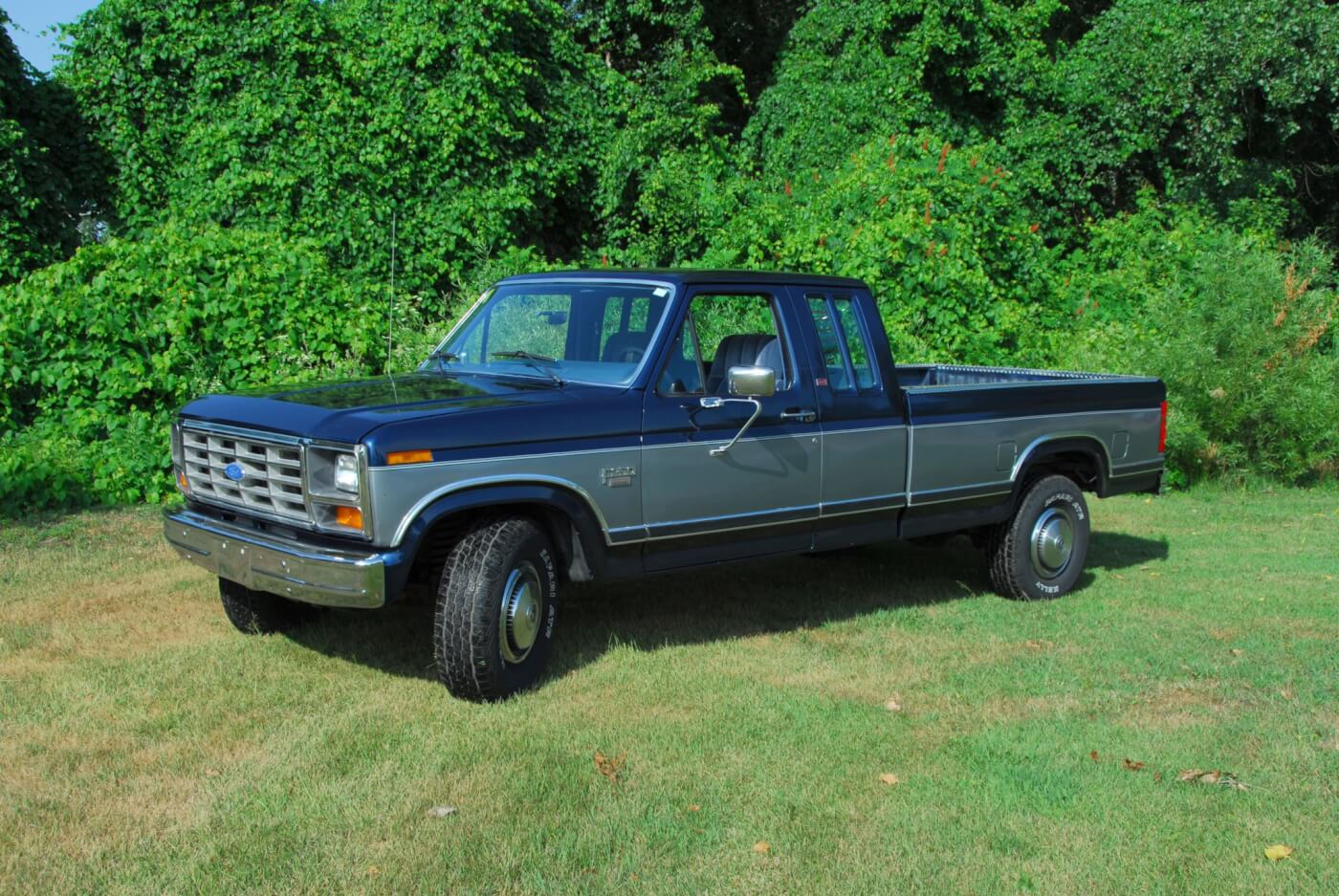
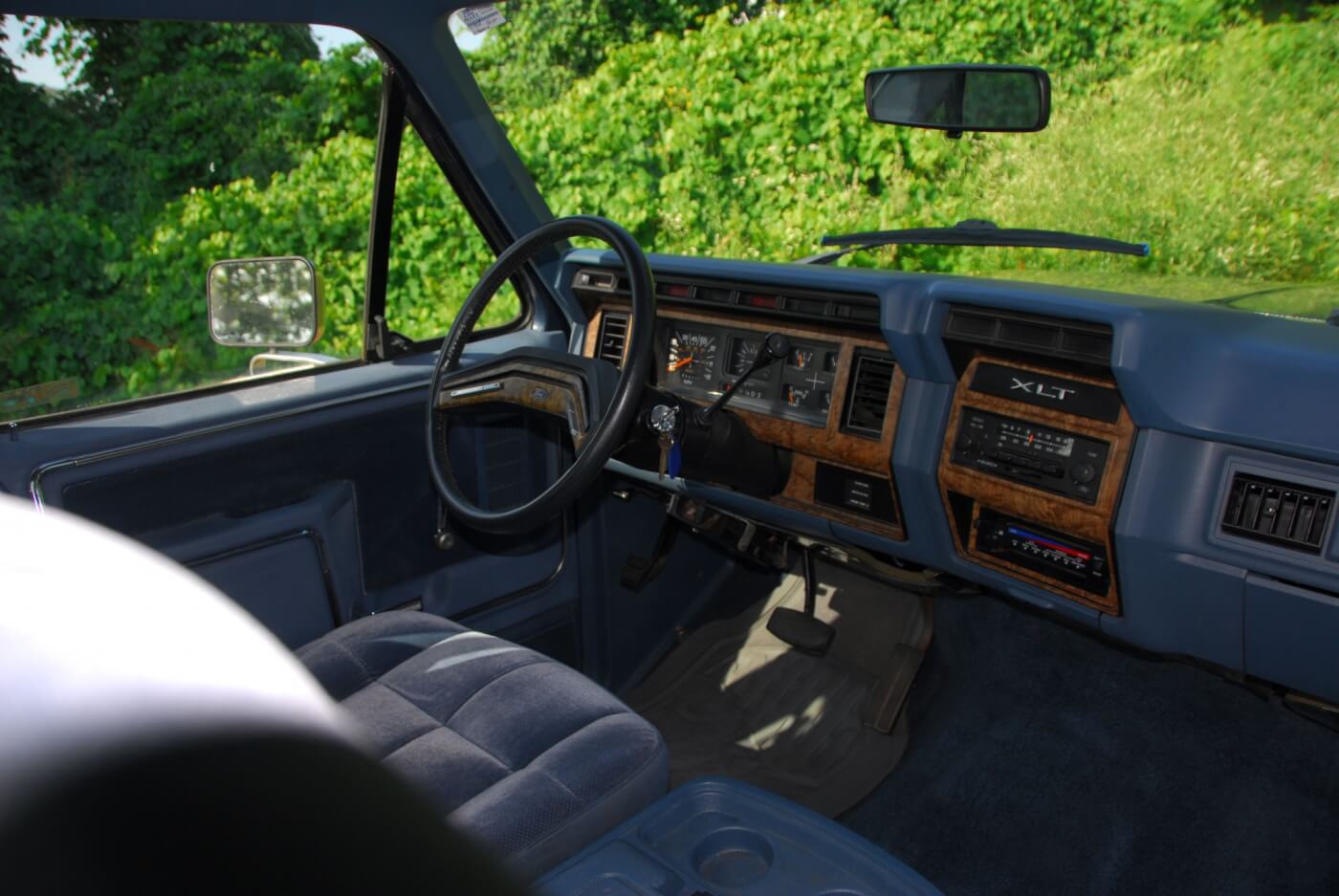
Ford debuted a new line of trucks in 1980 and the diesel entered the game right in the middle of that 1980-86 generation. Today, this body style is often called the “Bullnose” for its broad snout. It came in a Standard (base) trim, mid-line XL and full-boat XLT. Body styles included regular cab longbed, SuperCab longbed and, in some years, a crewcab longbed. “Lariat” was added to the XLT designation in 1985.
In this era, you had the choice of two transmissions, the Warner T-19 four-speed or the legendary C-6 automatic three-speed. If you ordered four-wheel drive, it came with a BorgWarner 1345 transfer case. Axles varied by year. To mid-1985, the rear axle was a Dana 61 or 70 axle. In mid-year 1985, the 10.25-inch ring gear Ford Sterling debuted in semi or full-float version (full-float only on the diesels). F-350 DRWs most often had Dana 70 HD axles but there are DRW Sterling axles out there too. Up front, the twin I-beam non-driving axles carried the load for 4x2s. The F-250HD 4×4 had a twin traction beam (TTB) Dana 44 as standard with a Dana 50 TTB optional, while the F-350 came standard with the stronger Dana 50 TTB. In 1985, the Dana 60 solid front axle was introduced and most F-350s had it. Only two axle ratios were offered for the diesels, 3.55 and 4.10:1. This was to remain the practice all the way through the IDI era.
1987-1991 – The Flatnose Era
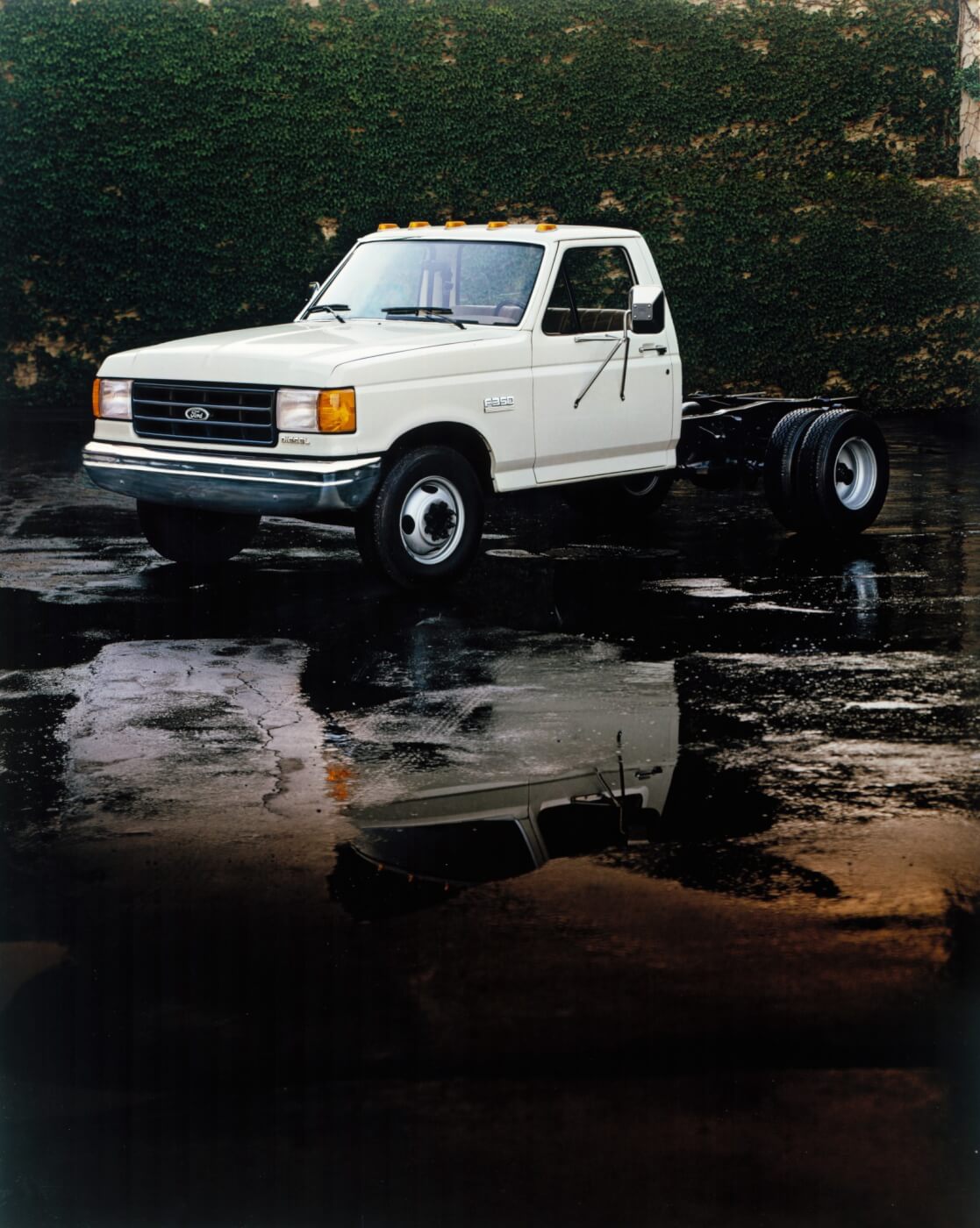

In 1987, Ford made some styling changes but did not alter basic body shape. To IDI diesel nuts, these trucks are known as the “Bricknose.” With their flattened nose and flush headlights, these trucks had a more aerodynamic look. Fenderwell shapes changed as well the interior. A small “Diesel” badge appeared under the driver’s headlight. Trim levels changed a little, with the base level now called “Custom,” and each level moved slightly upmarket.
The 6.9L pickup engine soldiered on for 1987, but was replaced by the 7.3 for model year 1988. A big innovation that came later in 1987 was the ZF five-speed manual transmission option. At first, buyers could choose between the standard T-19 four-speed, the ZF five-speed, and the C-6 automatic. By 1988 the T-19 had been dropped and the five-speed became the only manual option. Like the T-19, it had a taller first gear than the gasoline version.
For19’89, the E4OD overdrive automatic was offered in the diesel line. That was a big innovation, offering the mpg improvements of overdrive to those desiring automatics, but it had taken Ford a while to build one stout enough for use in the higher GVW light trucks. Trucks were built with a mix of three-speed C-6 and E4OD automatics through 1994, though in later years the C-6 was available only in the commercial cab and chassis lines. Suspension and axles stayed the same as the previous trucks but in this era the Dana 44 TTB was dropped and the F-250HD inherited the Dana 50 as the standard front end for 4x4s. With a few exceptions, F-350s still used the Dana 60.
1992-1994 – The OBS Era
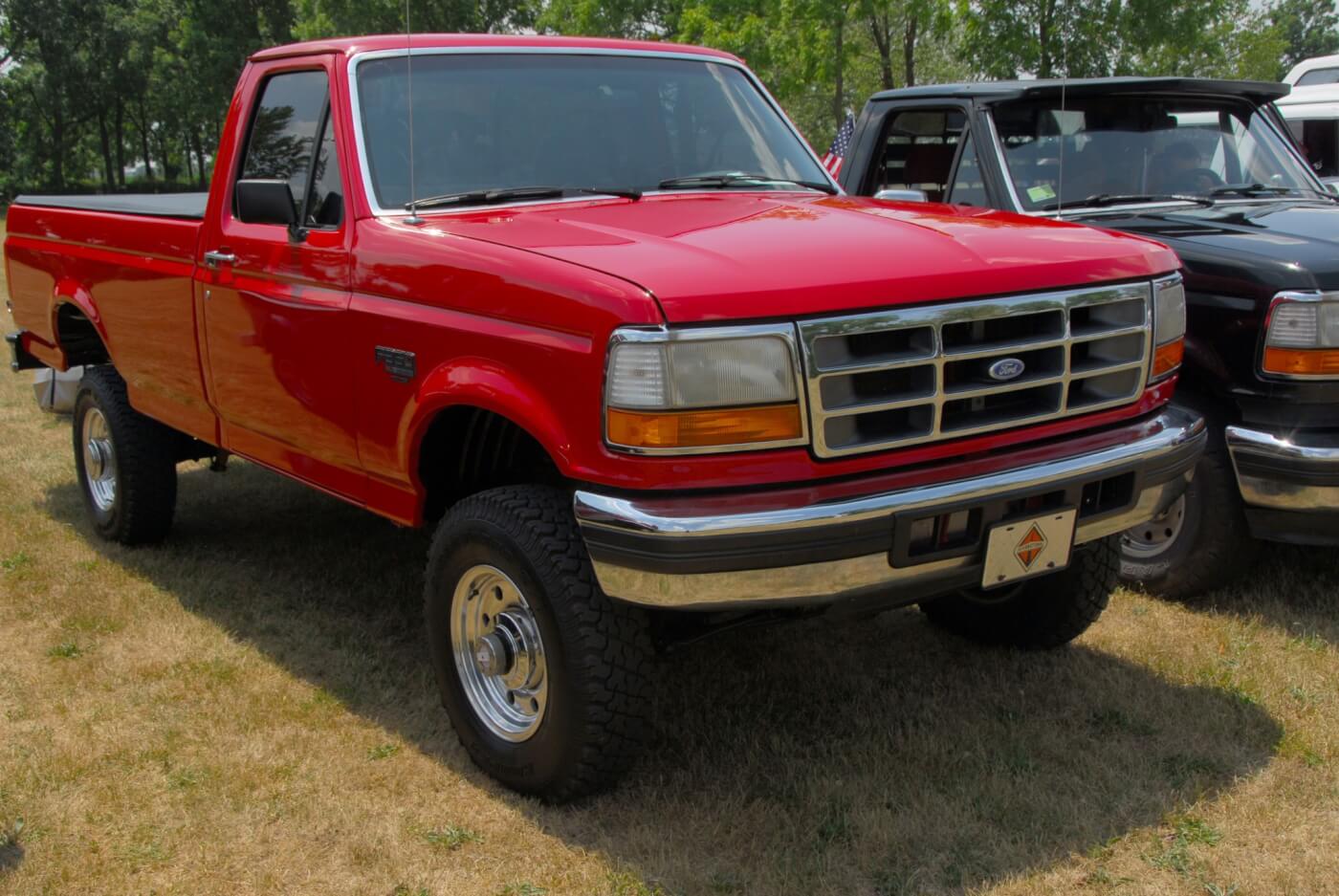
The front wrap changed again for ’92 but once again the basic body shape remained the same. For some reason, Ford diesel fans call this generation “OBS” for Old Body Style. We suppose that’s because the Power Stroke engine was installed into this body well into the ‘90s. The interior got a big makeover, but the powertrain options changed little.
The big news came in 1993 when Ford introduced a turbocharged version of the IDI diesel. The naturally-aspirated IDI continued as the baseline diesel option but output had increased to 185 hp and 360 lb-ft, the highest power and torque levels the NA IDI would achieve in factory trim. The Power Stroke was a midyear entrant for 1994 and the IDI trucks were soon in the “Oh, by the way” category. DW



